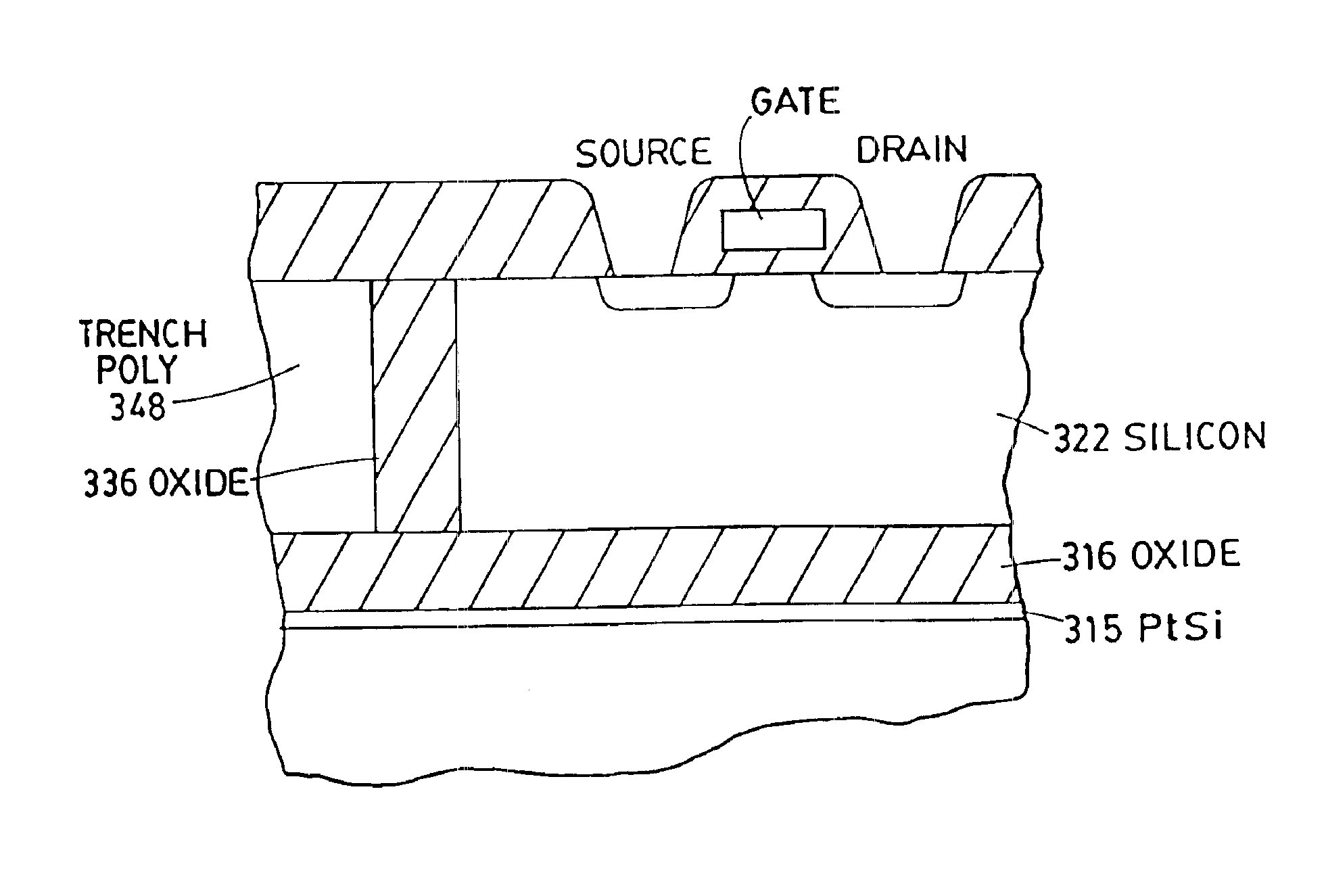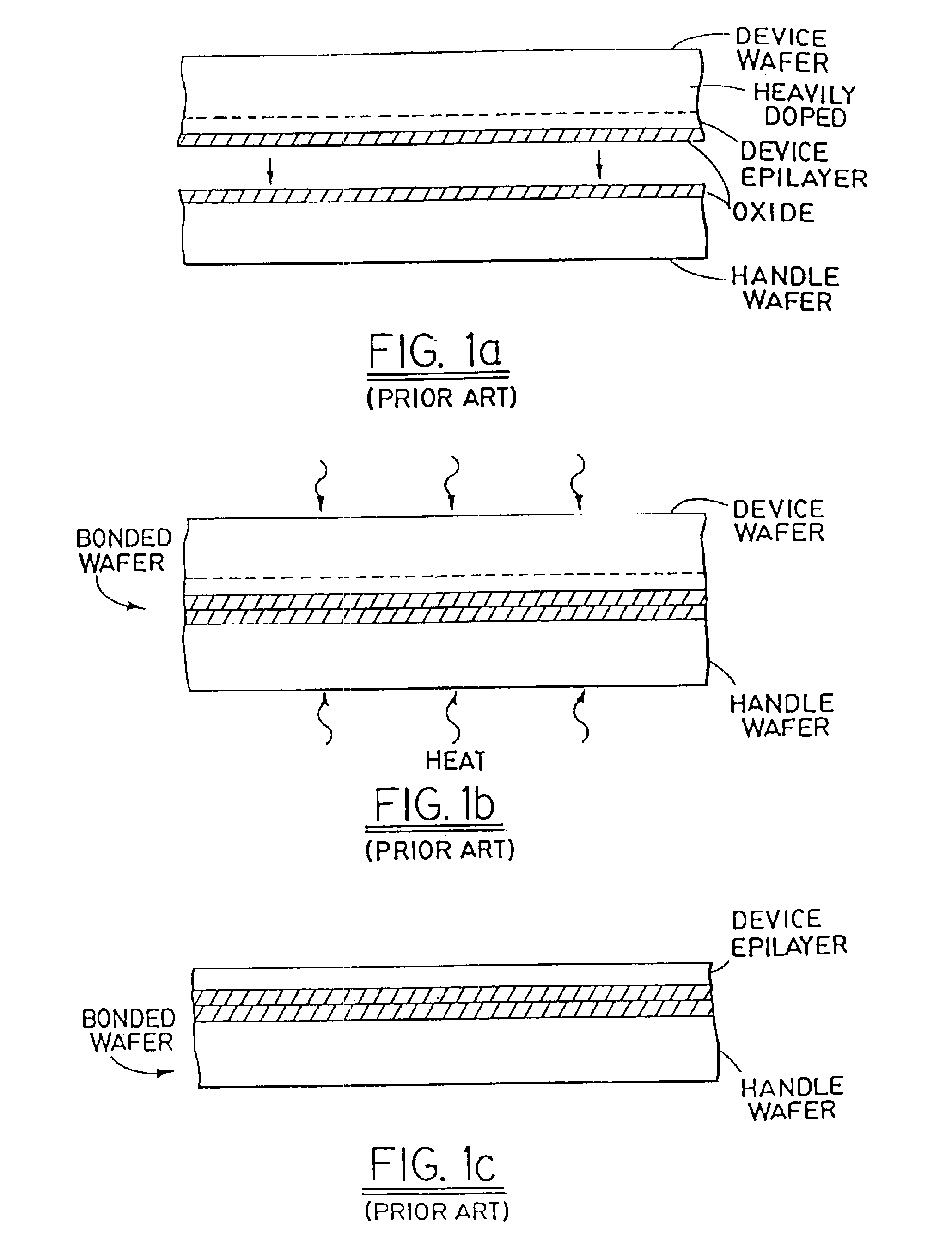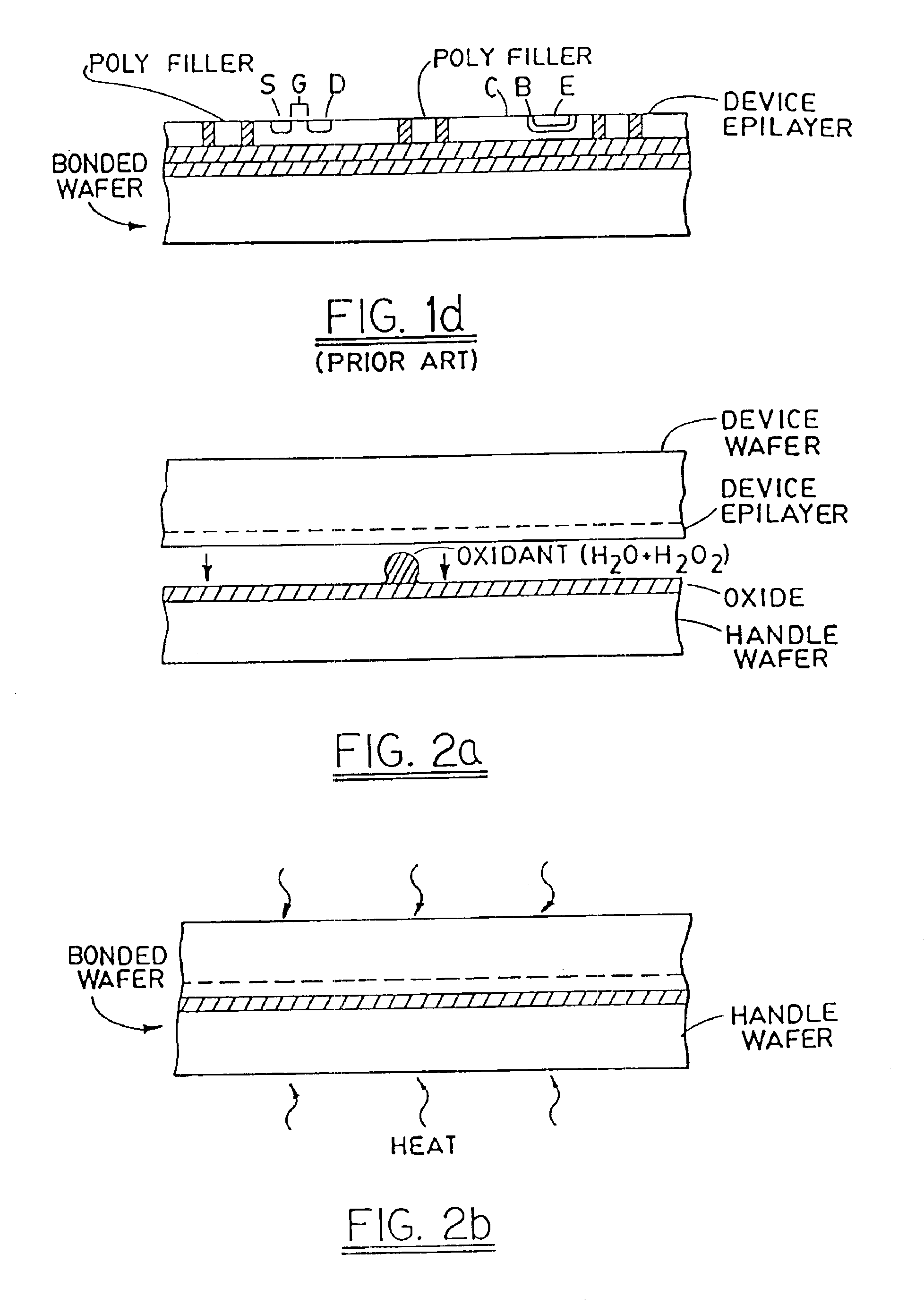Bonded wafer with metal silicidation
a metal silicidation and bonding technology, applied in the direction of basic electric elements, electrical equipment, semiconductor devices, etc., can solve the problems of low quality of oxide, and general inferior quality of bulk silicon layer, so as to improve stress compensation, reduce warpage, and bond low temperature
- Summary
- Abstract
- Description
- Claims
- Application Information
AI Technical Summary
Benefits of technology
Problems solved by technology
Method used
Image
Examples
Embodiment Construction
Silicidation Bonding
[0021]FIGS. 3a-f illustrate in cross-sectional elevation view a first preferred embodiment method of silicon-on-insulator bonded wafer processing.
[0022](a) Begin with a four-inch diameter 500 μm-thick silicon device wafer 302 and a comparable diameter 500-μm thick silicon handle wafer 312. Device wafer 302 has the doping type and resistivity (e.g., N type and 20 ohm-cm resistivity) desired for eventual device fabrication. Thermally oxidize device wafer 302 to form oxide layer 316. Oxide 316 will become the bottom oxide, so the oxide is grown to the desired bottom oxide thickness, e.g., about 2-4 μm. Alternatively, diamond or silicon nitride (“nitride”) can be deposited on device wafer 302 to form the buried dielectric layer 316. A diamond thin film 316 can be deposited by a chemical vapor deposition (CVD) reaction of methane and hydrogen, and a nitride thin film can be deposited by decomposition of silane and ammonia.
[0023]Deposit a 500-angstrom thick polysilicon...
PUM
 Login to View More
Login to View More Abstract
Description
Claims
Application Information
 Login to View More
Login to View More - R&D
- Intellectual Property
- Life Sciences
- Materials
- Tech Scout
- Unparalleled Data Quality
- Higher Quality Content
- 60% Fewer Hallucinations
Browse by: Latest US Patents, China's latest patents, Technical Efficacy Thesaurus, Application Domain, Technology Topic, Popular Technical Reports.
© 2025 PatSnap. All rights reserved.Legal|Privacy policy|Modern Slavery Act Transparency Statement|Sitemap|About US| Contact US: help@patsnap.com



